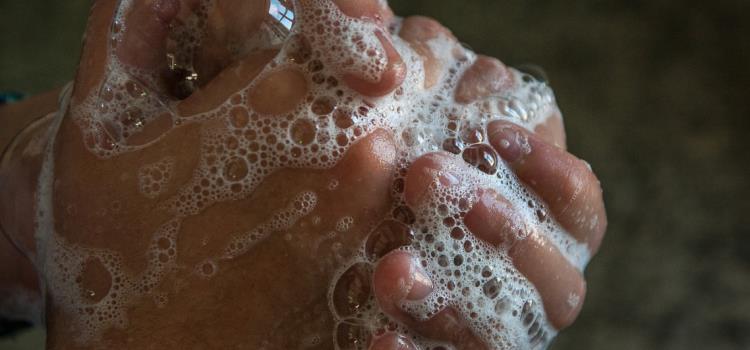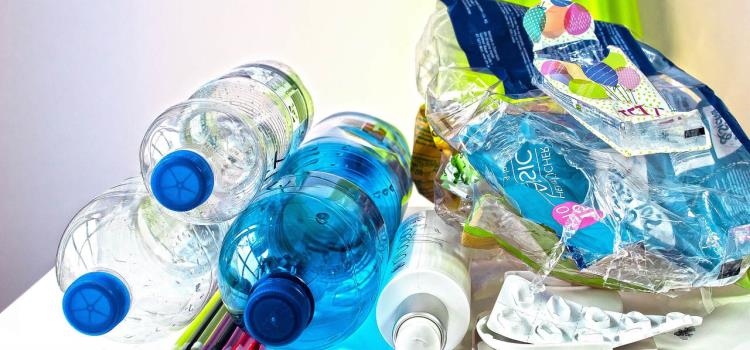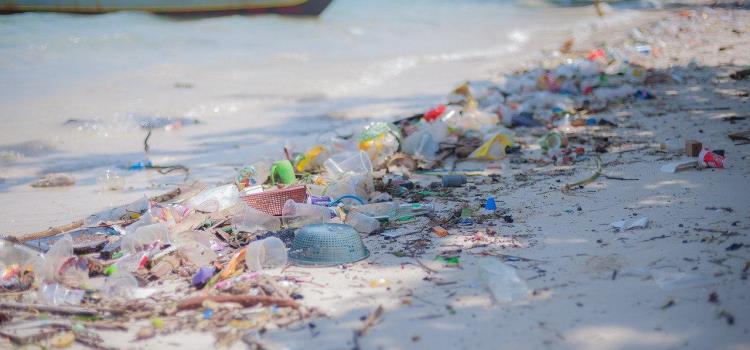
In a world grappling with the consequences of plastic pollution, innovative solutions for recycling plastic waste have become a paramount concern. One such solution has emerged from the laboratories of Virginia Tech, where a breakthrough discovery promises to revolutionise the way we view plastic recycling.
Guoliang Liu, a visionary scientist at Virginia Tech, has unearthed a novel method to transform polyethylene, a ubiquitous plastic, into a valuable commodity - detergent, or soap. This groundbreaking research not only sheds light on the potential of upcycling low-value plastic waste but also offers a glimpse into a more sustainable future.
Polyethylene, commonly found in a range of everyday items, has long posed a recycling challenge due to its durable nature and resistance to decomposition. However, Liu's research offers a glimmer of hope by leveraging the chemical similarity between polyethylene and the primary fatty acid present in soap. This chemical resemblance forms the basis of Liu's strategy to convert polyethylene into a surfactant - a compound crucial in the formulation of detergents and soaps.
The journey toward this transformative breakthrough began with Liu's contemplation on how to harness the long polyethylene chains and convert them into shorter fatty acid chains, ideal for soap production. The concept of upcycling - the process of converting waste materials into valuable products - fuelled Liu's determination to find a feasible solution. Liu's determination bore fruit when he drew inspiration from the simple act of observing smoke rising from a fireplace one evening.
Analogising the combustion process of firewood, Liu wondered whether a controlled combustion of polyethylene in a laboratory setting could yield analogous results. The idea was to break down the synthetic polyethylene molecules into short-chain, polyethylene-like molecules through a process called temperature-gradient thermolysis. This innovative technique involved heating the polyethylene in a specialised laboratory oven, with varying temperatures across its height. The high temperature at the bottom of the oven facilitated the breakdown of polymer chains, while the lower temperature at the top prevented further disintegration.
The results of Liu's experiment were nothing short of remarkable. The residue collected after the thermolysis resembled soot, analogous to cleaning a chimney, and was composed of "short-chain polyethylene," also known as waxes. This pivotal discovery marked the inception of a revolutionary plastic upcycling process. The next step in this journey involved employing saponification, a chemical reaction commonly used in soap production. With this step, the team managed to achieve a remarkable milestone - the creation of the world's first soap derived from plastics.
The significance of this achievement cannot be understated. Zhen Xu, lead author of the paper published in Science and one of the Ph.D. students, expressed the significance of their research as a novel route for plastic upcycling, devoid of complex catalysts or intricate procedures. The team's approach unveils a tandem strategy for plastic recycling that holds immense promise for the future. As Zhen Xu eloquently stated, "Our research demonstrates a new route for plastic upcycling without using novel catalysts or complex procedures. In this work, we have shown the potential of a tandem strategy for plastic recycling."

This groundbreaking research does more than just offer a solution for recycling polyethylene; it challenges the conventional notion of waste. The transformation of plastic waste into a valuable commodity like detergent presents a paradigm shift in the way we perceive waste materials. It underscores the need for innovation, creativity, and cross-disciplinary collaboration to tackle some of the most pressing environmental challenges of our time.
The implications of this breakthrough extend beyond the laboratory. The successful conversion of polyethylene into detergent not only offers a practical solution for recycling but also contributes to the reduction of plastic pollution. By repurposing plastic waste into useful products, we address the environmental burden posed by plastics while concurrently creating economic value from materials that were previously considered disposable.
Furthermore, the research at Virginia Tech emphasises the interconnectedness of scientific fields in addressing complex global challenges. Liu's collaboration with experts in computational modelling and economic analysis exemplifies the necessity of converging diverse expertise to unlock innovative solutions. This interdisciplinary approach broadens the scope of possibilities, enabling the development of more creative and effective upcycling procedures in the future.
The discovery of a method to convert polyethylene into soap marks a significant milestone in the realm of plastic recycling. Guoliang Liu's visionary research at Virginia Tech has illuminated a pathway towards sustainable plastic upcycling, offering another beacon of hope for a cleaner and more environmentally conscious future. The journey from plastic waste to valuable detergent reminds us that with ingenuity and collaboration, we can transform challenges into opportunities and do more to safeguard our planet for generations to come.
Share this story:
TweetBeyond the Headlines
Decoding Polyethylene: A closer look at its environmental implications
Polyethylene, a ubiquitous material in modern life, has left its mark on our environment, both in terms of its versatility and its environmental consequences. This synthetic polymer, widely used for its durability and flexibility, has a complex story that encompasses its composition, production, and the far-reaching impacts it has on our planet.

What is Polyethylene?
Polyethylene is a synthetic polymer made up of repeating units of ethylene, a simple hydrocarbon molecule derived from natural gas or crude oil. This polymer can be moulded into various forms, making it an ideal choice for countless applications, including packaging materials, plastic bags, bottles, toys, and even medical devices. Its widespread use stems from its affordability, lightweight nature, and resistance to moisture, chemicals, and degradation.
The creation of polyethylene
The production of polyethylene involves a process called polymerisation, where ethylene monomers are chemically bonded together to form long chains. This process is energy-intensive and typically relies on fossil fuels as feedstock. The most common forms of polyethylene are Low-Density Polyethylene (LDPE), High-Density Polyethylene (HDPE), and Polyethylene Terephthalate (PET), each tailored for specific applications based on their molecular structure and properties.
Environmental Impacts
While polyethylene's versatility has transformed industries and consumer experiences, its environmental footprint cannot be ignored:
Plastic Pollution:
Polyethylene is a major contributor to plastic pollution. Its durability ensures that discarded polyethylene items persist in the environment for hundreds of years. Plastic waste, including polyethylene, contaminates ecosystems, harms wildlife, and disrupts natural processes.
Resource Depletion:
The production of polyethylene relies on finite fossil fuel resources, contributing to resource depletion. Moreover, its production releases greenhouse gases, contributing to climate change.
Microplastics:
Over time, polyethylene products degrade into microplastic particles, which can infiltrate water bodies and ecosystems, potentially entering the food chain and posing health risks to both wildlife and humans.
Landfill Overload:
Polyethylene products often end up in landfills, consuming valuable land space and preventing efficient waste management.
Ocean Impact:
Discarded polyethylene items, such as plastic bags and packaging materials, find their way into the oceans, harming marine life and ecosystems.

Addressing the challenge
Mitigating the environmental impact of polyethylene necessitates a multi-pronged approach:
Recycling:
Promoting the recycling of polyethylene products reduces the demand for new plastic production and limits waste.
Alternative Materials:
Exploring and adopting biodegradable or less harmful materials for single-use applications can help alleviate the burden of polyethylene pollution.
Reduction and Reuse:
Encouraging reduced consumption of polyethylene products and promoting their reuse can significantly reduce waste generation.
Innovation:
Research into environmentally friendly alternatives and more sustainable production methods can pave the way for a greener future.
Awareness:
Raising public awareness about the environmental consequences of polyethylene use can drive changes in consumer behaviour and industry practices.
Upcycling: A ray of hope for Polyethylene's environmental impact
In the relentless pursuit of solutions to mitigate the environmental impact of polyethylene, the emerging concept of upcycling is a powerful and promising ally. Building upon the transformative breakthroughs in plastic recycling, like the pioneering work of Guoliang Liu at Virginia Tech, upcycling stands as a great option for addressing the challenges posed by polyethylene.
Upcycling, a process that breathes new life into discarded materials, offers a novel approach to the polyethylene dilemma. Unlike traditional recycling, which often involves breaking down materials into lower-value forms, upcycling takes waste materials and transforms them into higher-value products. This concept aligns perfectly with the resilient nature of polyethylene, a material notorious for its longevity in the environment.
Polyethylene Reimagined
Imagine a world where used plastic bottles, bags, and packaging materials crafted from polyethylene aren't condemned to a landfill or destined for an incinerator. Instead, these items find new purpose and value in innovative upcycling processes. Through upcycling, polyethylene products can undergo a metamorphosis, evolving into high-quality materials, such as sustainable textiles, building materials, or even intricate artworks.
The Environmental Implications
The environmental implications of polyethylene upcycling are profound. By diverting polyethylene waste from landfills and incineration, we reduce the burden on these waste management systems and limit the release of harmful pollutants into the environment. Moreover, upcycling conserves valuable resources, as less virgin plastic needs to be produced when we breathe new life into existing materials.
A Sustainable Future
Embracing upcycling as a viable solution for polyethylene offers multiple benefits. It not only reduces the accumulation of plastic waste in our environment but also contributes to the reduction of greenhouse gas emissions associated with the production of new plastic. Additionally, upcycling fosters a circular economy, where materials are continually reused and repurposed, reducing the need for raw material extraction and minimising the environmental footprint.
Challenges and Innovation
While the concept of upcycling holds immense promise, it's not without its challenges. Developing efficient and scalable upcycling processes for polyethylene requires innovation, research, and investment. Finding ways to integrate upcycled materials into various industries and consumer products also presents logistical and market-related hurdles. Nonetheless, with the commitment of researchers, entrepreneurs, and policymakers, these challenges can be overcome.
The potential of upcycling polyethylene materials serves as a shining example of human ingenuity and resilience in the face of environmental challenges. It calls for a collective effort from individuals, businesses, and governments to support and promote upcycling initiatives.











